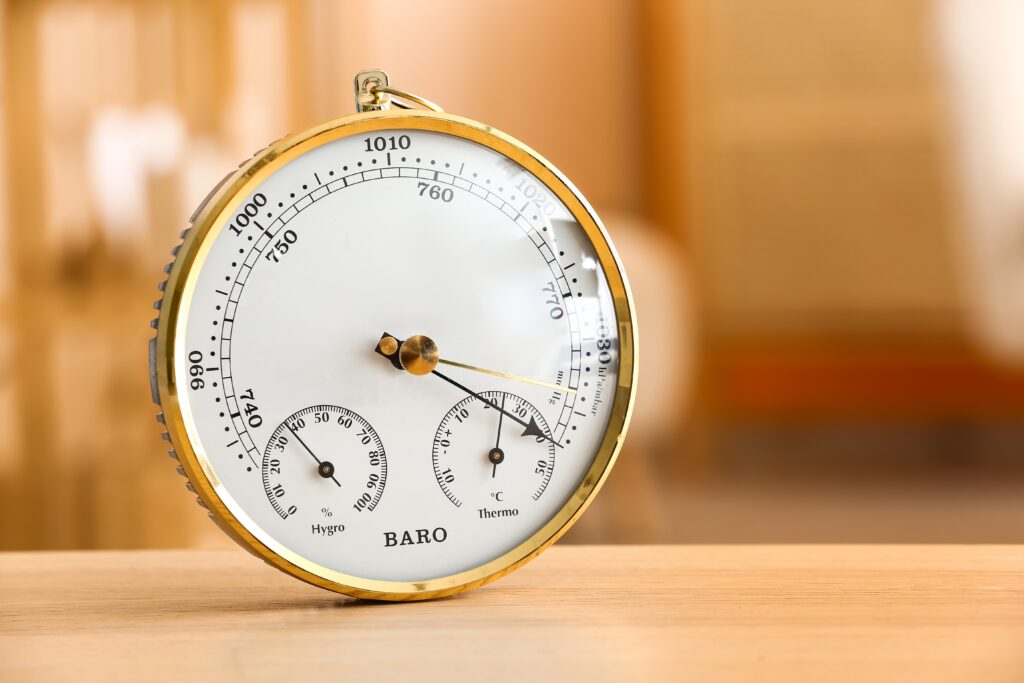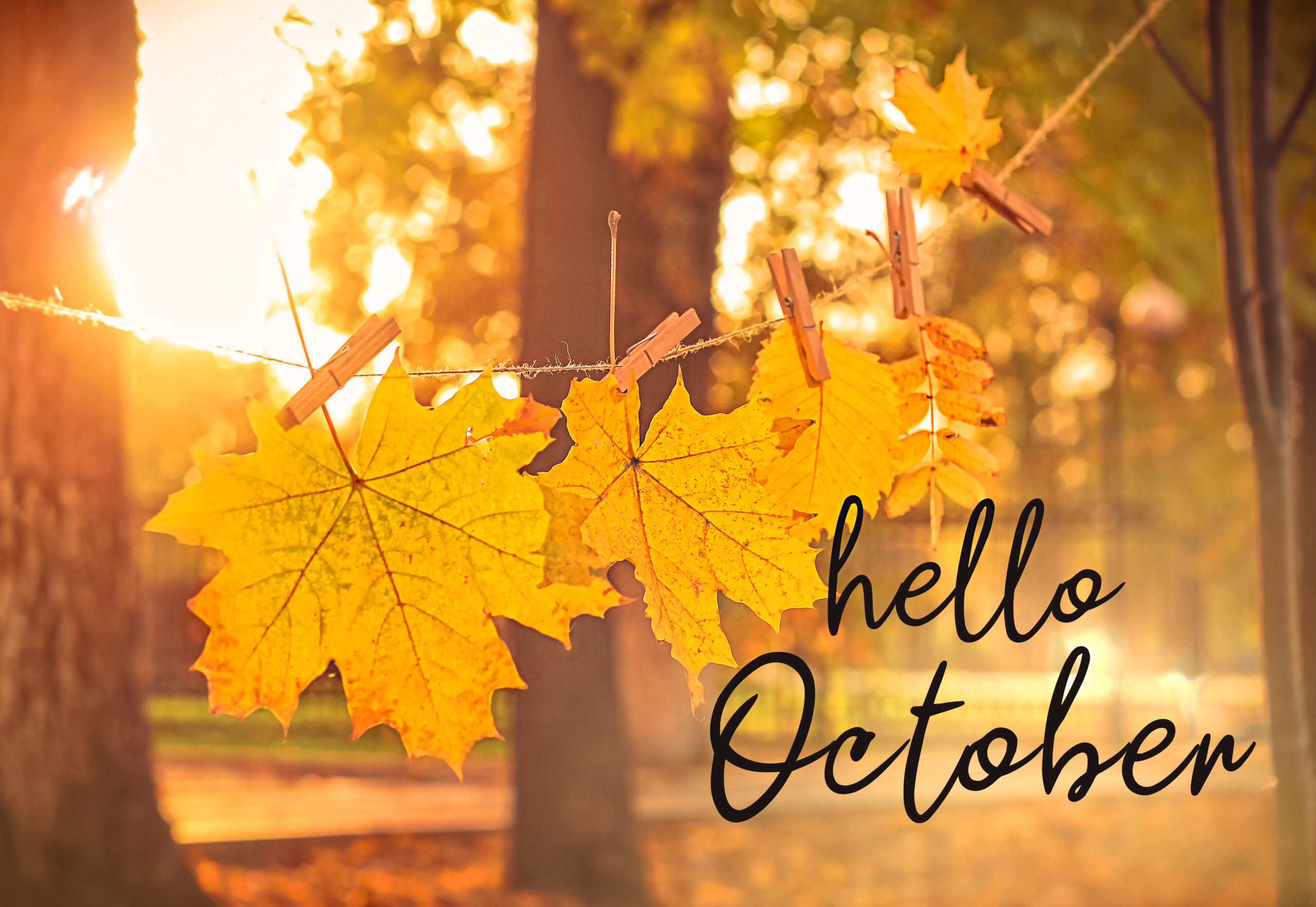Now live! RTHM Direct – simplified medication access for Long COVID, ME/CFS and related conditions. Check it out
As the leaves start turning colors, the air becomes crisp, and you start reaching for your favorite hoodie, you may also notice that your Long COVID symptoms are changing. We all have that one friend who says they can feel when a storm is coming, whether through a bum knee or headaches. While most of the time we take this with a grain of salt, the fact is they may be on to something. Changes in temperature, barometric pressure, and humidity can all affect your body and your symptoms. For those with chronic medical conditions, such as dysautonomia and ME/CFS, and before the arrival of COVID, this fall temperature change has become known as the “October Slide.” As we enter October, those with a new Long COVID diagnosis may see their symptoms changing or worsening. But what exactly is the “October Slide?”
The October Slide
The October Slide is defined as an increase in symptoms that appear in the fall. The slide portion of the name stands for school stress, low barometric pressure, illnesses increase, days get darker, and exercise ebbs. While not an official medical term, most of us living with chronic conditions understand this change all too well. To get a better understanding of what all these factors can mean for our symptoms, let’s look at each individually.
School Stress
Whether you are a student or a parent of school-aged children, you understand that the start of a new school year can be stressful in many different ways. Starting a new, busy schedule, that includes classes, studying, and extracurricular activities, such as sports practice and games, can be overwhelming.
As someone with a chronic illness or new Long COVID diagnosis, you may only be starting to adapt to pacing and a new way of life. The start of a new school year can make it difficult to pace as you need, often making symptoms worse and leaving you feeling wiped out.
If you are finding that the school year is becoming too much for you or your child, you may need to make some adjustments. Don’t be afraid to ask friends and family for help when it comes to getting the kids to school or practice throughout the week. If your child has Long COVID, you may want to consider talking with their teachers about their Long COVID symptoms and how they may need special consideration. If this is not possible, you may want to consider an alternative, such as homeschooling or online schooling programs where they can pace their schoolwork in a way that helps reduce symptoms.
Low Barometric Pressure
As the cold, moist air of fall moves in, drops in barometric air pressure become common. Barometric pressure refers to the pressure in the air and the force that the air is applying to your body. When the barometric pressure goes down, there is less pressure on the tissues of the body. When this happens, it becomes easier for the tissues, including muscles and tendons, to swell or expand. This swelling can happen anywhere in the body, such as in the sinus cavity, contributing to headaches, or in the muscles and tendons, contributing to joint pain or muscle stiffness that is often seen with arthritis or Fibromyalgia.
Illnesses Increase
As the cold weather nears, so does the cold and flu season. While the colder temperatures and snowstorms are not carrying the virus, the changes in weather do allow these viruses to replicate and spread much more easily. Studies show that decreases in temperature and humidity can increase the risk of rhinovirus infections, or the common cold.
The drier, colder air dries out the mucus membranes, making it easier for the virus to enter the body. In addition, colder temperatures and a reduction in vitamin D due to less sun exposure can weaken the immune system, making it harder for the body to fight off infections. Breathing in cold air also causes the blood vessels in your respiratory system to narrow in order to conserve heat, meaning that white blood cells in the body have a harder time reaching areas infected.
The colder weather also means that we are spending more time indoors in order to avoid the cold. This means more people are exposed to each other, making it easier for cold and flu viruses to spread.

Days Darken
As the days get shorter, so does our exposure to sunlight. As we mentioned above, this can greatly affect vitamin D levels in the body. Your body makes vitamin D through exposure to the sun’s UV rays that convert 7-dehydrocholesterol into vitamin D3 which is converted in the liver and kidneys to active vitamin D which helps support your immune system. During the winter, this lack of sun exposure can greatly reduce your vitamin D levels.
In addition, the shorter, darker days of winter can contribute to seasonal affective disorder, or SAD. This can contribute to depression, changes in appetite, sleep disturbances, low energy levels, and social withdrawal.
Exercise Ebbs
While we all know the idea that exercise is good for our health, in some cases of chronic illness, such as ME/CFS and Long COVID, where people experience post-exertional malaise, the idea of exercise is not a part of your October Slide. However, for others, the loss of exercise opportunities during the winter can contribute to weight gain, increased joint pain, muscle weakness, and negative changes in mood.
Surviving the October Slide and the Winter Months with Long COVID
If you notice your Long COVID symptoms worsening or changing as October and the colder weather approaches, there are some things you can do to help combat the changes that may occur. Implementing these strategies can help you get through the winter with Long COVID.
Talk with Your Doctors
As someone with Long COVID, chances are you are talking with your medical team on a regular basis already, but now may be the time to address any changes you may be experiencing or ways you can help avoid symptoms worsening during the winter months. This can include things like vitamin D supplementation, closer symptom monitoring, or changes in your current medications.
Focus on Hydration and Moisture
As the dry air moves in, it is even more important for you to focus on keeping your body hydrated. During the summer months, the hot weather often makes it easier to drink a lot of water, but as the cold creeps in, you aren’t quite as focused on drinking as much water, but it is still just as important. Water apps are a great way to remind you to drink water, or even a warm cup of tea, throughout the day and maintain adequate hydration. For those with Dysautonomia or POTS, your physician may recommend oral rehydration salts, such as NormaLyte or Liquid I.V.
For dry mucus membranes, you may want to talk with your medical team about adding saline moisture sprays in order to keep your nasal mucosa moist, less prone to nosebleeds, and help make it more difficult for viruses to enter your body.
Maintain Pacing to Minimize the October Slide
If you aren’t already, now is the time to focus on pacing your activities to help prevent symptom exacerbation during the winter months. Pacing is a strategy that allows you to balance activity with the rest your body needs in order to stay within your energy limits and avoid pushing past those limits. To learn more about pacing, read “What Is Pacing for Post-Exertional Malaise?” and “Adapting Your Lifestyle to Help Minimize Symptoms.”
Healthy Eating
Many of us with Long COVID or other chronic conditions often follow specific diets, such as a low histamine diet or a FODMAP diet in order to manage symptoms. Unfortunately, making meals every day is often more than our energy limits can allow. When you do make meals, consider making an extra portion and freezing it for days when you just can’t manage to cook. Take advantage of food delivery services when needed, as well as online grocery services that allow you to get the healthy foods you need without the unnecessary trips to the store that can push your energy limits.
Take Necessary Precautions
Knowing that the colder weather brings with it the cold and flu season, taking necessary precautions, such as wearing a mask or avoiding large crowds, can help reduce your risk of getting a cold, the flu, or another round of COVID. Talk with your medical team about flu and COVID booster shots.

Monitor Barometric Pressure Changes
Many online websites or mobile apps allow you to track barometric pressure. Tracking these changes on a regular basis can help you identify potential symptoms worsening as the pressure falls. When you see changes occurring, you can adjust your daily activities to help reduce symptoms.
Add Humidity to the Air
When the cold weather arrives, the humidity levels in your home decrease. Adding humidity to your home can help raise the humidity levels, helping to keep your nasal mucosa moist, as well as your skin. Some ways to add humidity include:
- Adding houseplants to your home
- Cooking on the stovetop, without the vents on, or simply boiling a pot of water throughout the day
- Leave a pan of water on top of your wood stove, fireplace, or near heat vents
- Leave the bathroom vent off and the door open when you shower so the steam is released into the house
- Seal windows and doors with weatherstripping to reduce the loss of heat and humidity
- Add a humidifier to your home
The Team at RTHM is Here to Help You Navigate the October Slide
While there is still so much that we don’t know about Long COVID, the team at RTHM, along with physicians and researchers around the world, are working to understand underlying causes and potential treatment options. However, at RTHM, we understand how frustrating the unknown can be for patients looking for answers and treatments that will help them return to their pre-COVID selves. Our team of medical providers understands your frustration and is here to listen while also providing the most current treatment options in order to help reduce your symptoms and improve your quality of life.

Get updates
Join our mailing list



